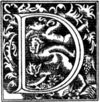BOOK VI.
IGGING of veins I have written of, and the timbering of shafts, tunnels, drifts, and other excavations, and the art of surveying. I will now speak first of all, of the iron tools with which veins and rocks are broken, then of the buckets into which the lumps of earth, rock, metal, and other excavated materials are thrown, in order that they may be drawn, conveyed, or carried out. Also, I will speak of the water vessels and drains, then of the machines of different kinds,[1] and lastly of the maladies of miners. And while all these matters are being described accurately, many methods of work will be explained.
There are certain iron tools which the miners designate by names of their own, and besides these, there are wedges, iron blocks, iron plates, hammers, crowbars, pikes, picks, hoes, and shovels. Of those which are especially referred to as "iron tools" there are four varieties, which are different from one another in length or thickness, but not in shape, for the upper end of all of them is broad and square, so that it can be struck by the
- ↑ This Book is devoted in the main to winding, ventilating, and pumping machinery. Their mechanical principles are very old. The block and pulley, the windlass, the use of water-wheels, the transmission of power through shafts and gear-wheels, chain-pumps, piston-pumps with valves, were all known to the Greeks and Romans, and possibly earlier. Machines involving these principles were described by Ctesibius, an Alexandrian of 250 b.c., by Archimedes (287-212 {{sc|b.c.), and by Vitruvius (1st Century b.c.) As to how far these machines were applied to mining by the Ancients we have but little evidence, and this largely in connection with handling water. Diodorus Siculus (1st Century b.c.) referring to the Spanish mines, says (Book V.): "Sometimes at great depths they meet great rivers underground, but by art give check to the violence of the streams, for by cutting trenches they divert the current, and being sure to gain what they aim at when they have begun, they never leave off till they have finished it. And they admirably pump out the water with those instruments called Egyptian pumps, invented by Archimedes, the Syracusan, when he was in Egypt. By these, with constant pumping by turns they throw up the water to the mouth of the pit and thus drain the mine; for this engine is so ingeniously contrived that a vast quantity of water is strangely and with little labour cast out."
Strabo (63 b.c.—24 a.d., iii., 2, 9), also referring to Spanish mines, quoting from Posidonius (about 100 b.c.), says: "He compares with these (the Athenians) the activity and diligence of the Turdetani, who are in the habit of cutting tortuous and deep tunnels, and draining the streams which they frequently encounter by means of Egyptian screws." (Hamilton's Tran., Vol. I., p. 221). The "Egyptian screw" was Archimedes' screw, and was thus called because much used by the Egyptians for irrigation. Pliny (xxxiii., 31) also says, in speaking of the Spanish silver-lead mines: "The mountain has been excavated for a distance of 1,500 paces, and along this distance there are water-carriers standing by torchlight night and day steadily baling the water (thus) making quite a river." The re-opening of the mines at Rio Tinto in the middle of the 18th Century disclosed old Roman stopes, in which were found several water-wheels. These were about 15 feet in diameter, lifting the water by the reverse arrangement to an overshot water-wheel. A wooden Archimedian screw was also found in the neighbourhood. (Nash, The Rio Tinto Mine, its History and Romance, London, 1904).
Until early in the 18th Century, water formed the limiting factor in the depth of mines. To the great devotion to this water problem we owe the invention of the steam engine. In 1705 Newcomen—no doubt inspired by Savery's unsuccessful attempt—invented his engine, and installed the first one on a colliery at Wolverhampton, in Staffordshire. With its success, a new era was opened to the miner, to be yet further extended by Watts's improvements sixty years later. It should be a matter of satisfaction to mining engineers that not only was the steam engine the handiwork of their profession, but that another mining engineer, Stephenson, in his effort to further the advance of his calling, invented the locomotive.


